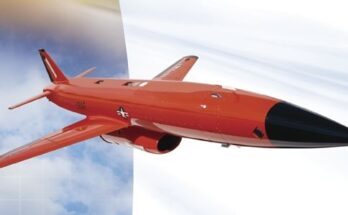
On October 4, 2023, steel was first cut for Brazil’s future nuclear attack submarine Alvaro Alberto in a ceremony held by the Brazilian Navy and the Brazilian state-owned company Itaguai Construcoses Navais (ICN).
At present, the contractual arrangements are for the construction of a single submarine of this class. However, some reports suggest that three are likely to be built, with possibly a second round of three – for a final total of six.
Brazil’s nuclear submarine program is expected to have an overall startup cost of $7.4 billion, which includes technology, infrastructure, logistics, and construction of the first boat.
The unit cost of the second Brazilian SSN and onward has been suggested to be around $1.2 billion, but in all likelihood will be much higher.
The Brazilian SSN program was hit especially hard by the COVID-19 pandemic. With major work still required on the nuclear submarine construction yards, extensive delays are likely. Exacerbating this issue is that COVID also severely impacted France, as French companies endured long lockdowns. Moreover, there were reports that the French design offices were already overloaded by work being conducted under the French Navy Barracuda program and the Australian Attack class submarine contract. (Australia has since canceled the contract with France in order to pursue nuclear-propelled submarines in partnership with the U.S. and U.K. now known as AUKUS.)
All this was a part of the chaos that surrounded the pandemic years of 2020-2022, but the Brazilian nuclear submarine program was to suffer a worse blow. News began to spread that significant redesign work had to be undertaken on the reactors intended for the program. These reports suggested that the changes needed were extensive enough to require the reactors to be recertified. This process alone could take up to five years.
Whatever the precise mix of events, the delivery of the first Brazilian SSN has been pushed back, with a more realistic timeline putting the submarine in action around 2034.
For more than 30 years, Richard has performed numerous roles as a top analyst for Forecast International. Currently, Richard is the Group Leader and Lead Analyst for Forecast International's Traditional Defense Systems, which covers all aspects of naval warfare, military vehicles, ordnance and munitions, missiles, and unmanned vehicles.
Having previously been Forecast International's Electronics Group Leader for 20-plus years, Richard established Electro-Optical Systems Forecast, as well as having been the prime editor of Electronic Systems Forecast, Land & Sea-Based Electronics Forecast, and C4I Forecast. Additionally, Richard has served as the Naval Systems Group Leader responsible for Anti-Submarine Warfare Forecast andWarships Forecast.




